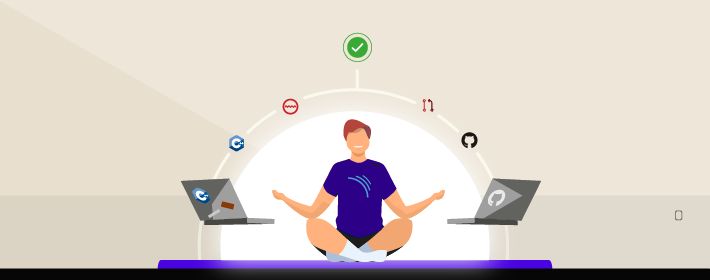Late feedback is a pain in the butt. Regardless of how it comes, hearing “that thing you did two weeks ago was wrong” is unwelcome at best. Good feedback is immediate, actionable and at least dispassionate, if not compassionate.
That’s why we help you integrate C++ static analysis throughout your workflow, so you and your team get the feedback you need when and where it’s most useful.
In this post, I’ll walk through how SonarQube and SonarLint integrate smoothly into your workflow and your team to give you the right data at the right time and in the right place.
Most experienced developers understand that coding is a bit of a team sport. Success requires both individual performances as well as cooperation and, well, teamwork. That’s where SonarQube comes in. It helps teams coalesce around shared standards and a shared vision of quality. The two biggest pieces of this are the Quality Profile and the Quality Gate.
Your code; your standards
A Quality Profile is a subset of rules applied during analysis to raise issues on your code. The out-of-the-box profile is named “Sonar way”, and we work hard to make sure the Sonar way profile for each language is uncontroversial.
Currently Sonar way for C++ consists of nearly 300 rules, 44 of which tie back to the C++ Core Guidelines championed by Bjarne Stroustrup and Herb Sutter. The idea with the default profile is that your first analysis should only raise “no brainer” issues; ones that most people will obviously want to fix (E.G. null pointer dereferences).
But narrowing the profile to only uncontroversial rules, means that we’ve omitted the rules for special situations. For instance, beyond the 44 C++ Core Guidelines rules in the default profile, we’ve implemented another 18 rules that aren’t in the default profile.
#cpp #cplusplus #feedback #developer-tools #static-analysis #c++
